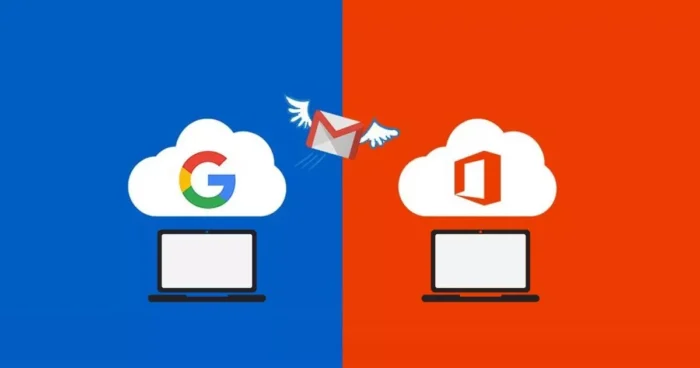
When you are leading an organization, you need to have access to the cloud that extends the benefits of:
- Cost Efficiency
- Data protection
- Access your data anytime, anywhere.
- Compliance
However, this should not be the only reason to rejoice. The main reason is that a poorly done migration can cost you a lot of money. Below are the steps to follow for a successful Office 365 migration:

Choose the type of migration method
There are many different ways to go about migrating to Office 365 and based on that, you’ll get the achievements and challenges. These best practices help accommodate performance drivers for a smooth transition.
IMAP migration and performance factors
The migration method, also known as Internet Message Access Protocol, uses the Exchange admin center to migrate a user’s mailbox from his IMAP ecosystem to an Office 365 mailbox.
Cutover migration
If you want to move all on-premises mailboxes, entire email organizations, email contacts, distribution groups, and user accounts to Office 365, you should use cutover migration.
Staged migration
A phased migration can be used to transfer batches of on-premises mailboxes over several months.
Third-party migration
Various third parties use their protocols and approaches to perform Office 365 migrations.

Factors affecting Office 365 migration using different methods
Once you’ve decided on the type of migration method, you need to consider the factors that influence your Office 365 migration so you can follow proper best practices.
1. Data extraction source
Data extraction usually starts at the beginning of the data migration. The source point should have sufficient resources for optimal migration performance and to avoid end-user issues. A best practice for Office 365 migrations in such cases is to monitor system performance during pilot migration testing. You can also add hardware resources to reduce system load.
2. Check the existing running system
Always initiate migrations during non-business hours when resource-intensive tasks are not running.
3. Throttling
Always check the throttling policy provided for your email system, as the throttling policy determines the rate limit and amount of data extracted.
4. Choose the correct license
An organization can be primarily divided into various work groups or functional groups such as sales, human resources, finance, and IT. These groups must be divided into user groups and all these user groups must be licensed.
5. Prepare your ecosystem
This step should be considered the most critical step in determining whether your transition to Office 365 will go smoothly. You need to build an environment that facilitates migration. For example, make sure your on-premises Exchange servers are running the correct version of Exchange, depending on the migration method you use.
There is usually always data that needs cleaning but was not paid attention to. You should take the time to clean up your on-premises Active Directory so that only the data your users need is migrated.
If you want to avoid all the stress of Migration, choose a good hosting provider who can help you with all these migration processes. Not only that, but this provider can also help you to set up Azure Virtual Desktop which can help you easily access your Emails and other company data from anywhere.

Security and Compliance with Office 365
Organizations interested in investing in Microsoft Office 365 can be assured of the highest levels of security and compliance, as the reasons for making the switch often involve the need to protect their data. Office 365 is designed for organizations looking to achieve a high degree of data security with tools such as encryption, malware detection and more. Plus, with Office 365 you have regular updates, so you can always be sure your data is up-to-date.
Microsoft also takes proactive steps to ensure that information stored within its cloud environment meets regulatory compliance standards. With extensive audits conducted to prove compliance with industry regulations as well as Microsoft’s own Privacy Protocols and Security Policies, customers can trust that their data is secure and compliant within its cloud environment.
Additionally, Office 365 allows access by multiple users who may be located in different countries or locations. Having this ability to access corporate resources from anywhere allows a greater degree of flexibility in how work gets done while still maintaining a secure IT infrastructure and user experience.
Cost Considerations
Cost considerations are understandably one of the primary factors driving decisions to migrate to Office 365. The main reason that many organizations are choosing this platform is that it has the potential to reduce IT-borne costs significantly.
The advantages of subscribing to Office 365 include: paying per user per month, reducing hardware, software and associated upgrades, and maintaining a centralized system with few maintenance efforts. Since the services are securely stored outside of the organization with Microsoft taking full control over backups and data security, businesses save on IT infrastructure support costs.
The financial savings for moving to Office 365 become much clearer when it comes time for an organization’s annual software refresh or upgrade cycle as there are no longer any expensive upfront fees for either upgrading or installing software on individual machines as everything is now done automatically through cloud computing.
Furthermore, businesses benefit from improved collaboration and communication with abilities such as file sharing, instant messaging and even video conferencing—all with drastically reduced telecommunication costs due to feature-rich Office 365—and without the need for complex network infrastructures.
Not only do organizations save money in regards to monthly or yearly licensing fees but enablement costs associated with deploying Office applications across their organization’s desktops are also saved since deployments of new software such as Word documents can be done remotely without requiring manual intervention by each user’s machine at all.
The scalability of being able to successfully rollout and manage multiple licenses accordingly also significantly expedites any required upgrades or changes in synchronization across multiple machines at once; again further reducing operational business costs than relying on manual labor aspects which would otherwise require much more time and financial investments in order for organizations to successfully keep their latest version applications up-to-date across multiple desktops maintained by their employees across different locations throughout their business operations.

Conclusion:
When undertaking a migration project, it can be difficult to obtain detailed knowledge and the right experts. It’s always good to rely on one of the service providers who knows what they’re doing professionally. Apps4Rent specializes in migration and application hosting services such as QuickBooks Hosting to safeguard users’ data which can be retrieved even in times of disaster, which is why most small businesses around the world trust them.











